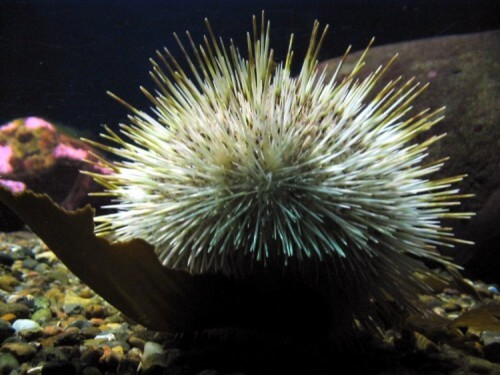Will the hedgehogs be able to help us in the fight against the climate crisis? A team of British scientists claims it is.
By: Maya Givon

The armor of the sea urchins is hardened thanks to the nickel ions in their bodies, which fix the carbon dioxide in the water as calcium carbonate quickly and conveniently. Will the hedgehogs be able to help us in the fight against the climate crisis? A team of British scientists claims it is.
Greenhouse gases, primarily the natural gas carbon dioxide, (which is a significant part of the composition of our atmosphere) are quickly becoming a major threat to our health due to their ability to store heat, which causes global climate change.
Alongside the necessary (but for the time being insufficient) efforts by the countries of the world to reduce greenhouse gas emissions in their area, researchers are looking for technological solutions that will make it possible to reduce the concentration of carbon dioxide in the atmosphere. The main technological solution promoted today is based on pumping carbon dioxide from the emissions of power plants, for example, and injecting it at high pressure into pockets in the soil condenser. Opinions regarding the stability of these solutions and their viability are still divided.
We, as usual, suggest looking at nature as a measure and as a model. The carbon cycle in nature is based on simple chemical reactions, which bind the carbon dioxide and turn it into a mineral, which is harmless and useful to many creatures. In an article recently published in the journal Catalysis Science and Technology, a team of researchers from the University of Newcastle reports a discovery that could accelerate the development of a cheap and efficient mechanism for fixing carbon dioxide. The team studied sea urchins, and discovered a process of fixing carbon dioxide from sea water by oxidizing it with the help of nickel found in the bodies of sea urchins, and turning it into calcium carbonate (calcium carbonate, 3CaCO), a mineral salt that constitutes their hard armor. The nickel is used as a catalyst in the process, that is, it accelerates the chemical process without being consumed during it, so that the same nickel ion can catalyze the chemical reaction again and again.
Other catalysts are known in nature that carry out a similar chemical reaction - such as the enzyme carbonic anhydrase (carbonic anhydrase), which works in the red blood cells and helps transport carbon dioxide in the blood and maintain a constant level of acidity in the blood. Unlike carbonic anhydrase, which uses zinc ions, the action of nickel has many advantages, which can mark it as a preferred technological solution:
+ The action of nickel occurs at room temperature, at atmospheric pressure, and without any dependence on the acidity of its environment,
+ The nickel is soluble and has magnetic properties, and this can be used to easily separate it from a solution.
+ Nickel is thousands of times cheaper than enzymes currently sold on the market.
Sea urchins are not the only ones. The outer protective shell of oysters and corals as well as other hard parts of their bodies, made of calcium carbonate (chalk), are created by using the carbon dioxide dissolved in water. Will we also learn to use the excess carbon dioxide that accumulates in the atmosphere through our fault in a sustainable way, and turn it into a useful basic material?

One response
We already know how to use carbon dioxide in the atmosphere - it's called agriculture.
And if we didn't burn trees and call it biomass - it would be much better.
In relation to the sea urchins and similar chemical processes - the question is when this PADH is released back.